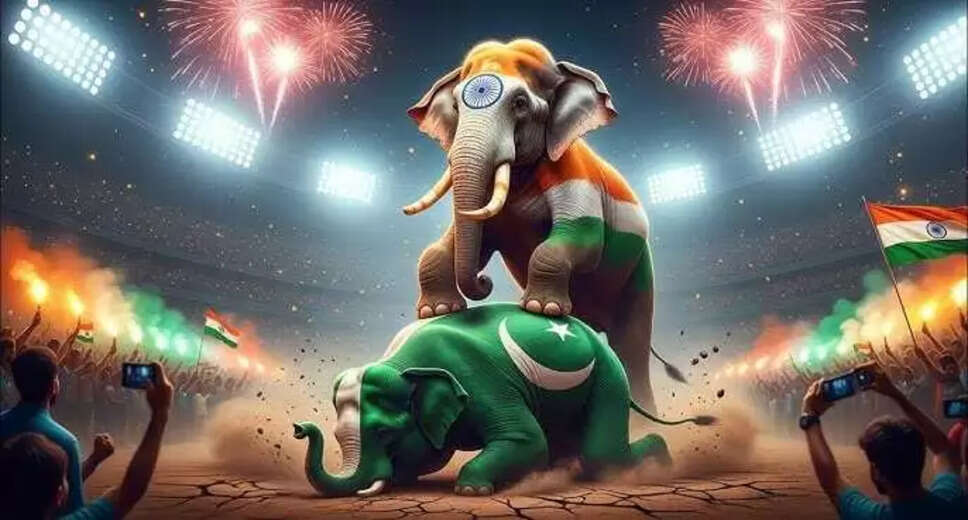The Complexities of Partition: Dividing Assets Between India and Pakistan

The Challenges of Partition
In the wake of independence, the partition of India and Pakistan was an arduous task filled with tension and conflict. It was decided that British India would be split into two nations: India and Pakistan. An English lawyer named Sir Cyril Radcliffe was appointed to draw the boundaries for this division. Some historians suggest that Radcliffe simply 'drew a line on the map' to separate the two countries. While the geographical division was established, the allocation of military, financial resources, and cultural assets between the two nations remained unresolved. At one point, a significant dispute arose over the division of an elephant. Let’s explore the unique aspects of this elephant and why its division proved to be so challenging on this Independence Day.
Key Figures in the Partition
On June 16, 1947, Governor-General Jenkins, in collaboration with Lord Mountbatten, formed a committee known as the Punjab Partition Committee. Its primary role was to advise on the division of finances, military personnel, and senior administrative officials along with their office supplies. According to a report by Economic Times, this committee was later renamed the Partition Council. Sardar Vallabhbhai Patel and Rajendra Prasad represented the Congress, while Liaquat Ali Khan and Abdur Rab Nishtar represented the All India Muslim League. Eventually, Muhammad Ali Jinnah replaced Nishtar.
A Tight Deadline for Division
Anvesha Sengupta, in her report titled 'Partition: The Division of Assets Between India and Pakistan', noted that the Partition Council had only 70 days to divide the British Indian state's assets. This tight timeframe required the allocation of all departmental properties and financial liabilities.
The Military Division and Its Challenges
The most significant challenge faced by the Partition Council was the division of the military. In this process, two-thirds of the army remained in India, while one-third was allocated to Pakistan. Reports indicate that approximately 260,000 soldiers stayed in India, predominantly Hindus and Sikhs, while around 140,000 soldiers moved to Pakistan, mostly Muslims. The Gorkha Brigade was split between India and Britain, complicating the process further. In Pakistan, the 19th Lancers replaced their Jat and Sikh soldiers with Muslim soldiers from the Skinner Horse.
Dividing Financial Assets
The division of financial assets posed another major challenge. According to the partition agreement, Pakistan was entitled to 17.5% of British India's assets and liabilities. Historical accounts reveal that India transferred 20 crore rupees to Pakistan on August 15, 1947, as promised. However, a sum of 75 crore rupees became embroiled in disputes after Pakistan invaded Kashmir with the help of mercenaries. Besides financial and military assets, India and Pakistan also agreed on the division of other movable properties, which were split in an 80-20 ratio, including office furniture, stationery, and even light bulbs.
The Dispute Over the Elephant
Reports indicate that animals were also part of the division. In the book 'Breaking Up: Dividing Assets Between India and Pakistan During Partition', it is mentioned that an elephant named Joymone from the colonial Bengal Forest Department faced challenges during the partition. Joymone was valued at the equivalent of a station wagon and was beloved by the forest department and local communities. This led to a dispute between the two nations, which ultimately required British intervention to resolve, resulting in West Bengal receiving the vehicle and East Bengal getting the elephant.
A Collector's Cleverness Saves the Elephant
At the time of independence, Joymone was located in Malda, which fell under West Bengal. The issue of payment for the elephant introduced a new dimension to the dispute. The Malda collector argued that the costs should be borne by the East Bengal government, which had lost part of its territory to Pakistan. Conversely, it was contended that since Malda had utilized the elephant, they should cover the expenses. This disagreement eventually reached diplomatic circles and was likely resolved at the level of chief secretaries.
British Officers as Military Heads
According to the National Army Museum (NAM), several British officers remained in India during the partition and transition period. Two notable figures were General Sir Robert Lockhart, who became India's first army chief, and General Sir Frank Messervy, who was appointed as Pakistan's first army chief.
